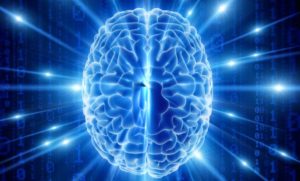Neurotechnology has released a new BrainAccess Development Kit that will make it easier for technology companies to build applications that respond to subtle changes in a user’s electroencephalography (EEG) patterns. For example, the user could control the application through eye movements, or create some kind of effect when they enter a relaxed state.

The Development Kit offers a dry-contact EEG system, which distinguishes it from more traditional ‘wet’ systems that use gel to attach the electrodes. That makes Neurotechnology’s electrodes more user-friendly, insofar as it is less messy and is easier to deploy outside of a laboratory environment. The electrodes will conform to the shape of the wearer’s skull to make the setup as comfortable as possible.
“EEG is a highly effective, low-cost method for measuring brain activity in BCI applications due to its non-invasive nature and high temporal resolution,” said Neurotechnology Project Lead Osvaldas Putkis. “However, in order for EEG to become practical enough for widespread use [it needs] efficient dry-contact electrodes for measurement and miniaturization of electroencephalographs with a high number of acquisition channels.”
BrainAccess is an attempt to deliver on that promise. The Development Kit comes with all of the hardware and software that developers will need to build EEG applications. That includes headware, signal processing software, and brain-computer interface (BCI) algorithms, in addition to the electrodes and one of two different electroencephalographs. The BrainAccess MINI is a portable EEG with 16 channels and wireless connectivity, while the BrainAccess MODULAR is more robust with 32-128 acquisition channels.
The MINI comes with the Standard version of BrainAccess, while MODULAR comes with the Extended version. Headware options, meanwhile, include the BrainAccess BAND and the BrainAccess CAP. The Kit also comes with BrainAccess Core Library and BrainAccess Viewer software for processing, recording, and EEG management, which collectively allows developers to interface with the EEG and set acquisition parameters.
The BrainAccess BCI Library, on the other hand, offers three sample algorithms to illustrate potential applications of the technology. One reads signal patterns associated with eye movements, while another reads alpha brainwaves. All of the software is compatible with C/C++ and Python APIs.
Neurotechnology is best known for more conventional forms of biometric technology like face and fingerprint recognition, though the BrainAccess Development Kit could potentially open the door for new use cases and new avenues of study. Researchers at the University of Buffalo have already explored an EEG authentication system, while SPARK Neuro is using it to monitor people’s responses to various kinds of media.

Follow Us